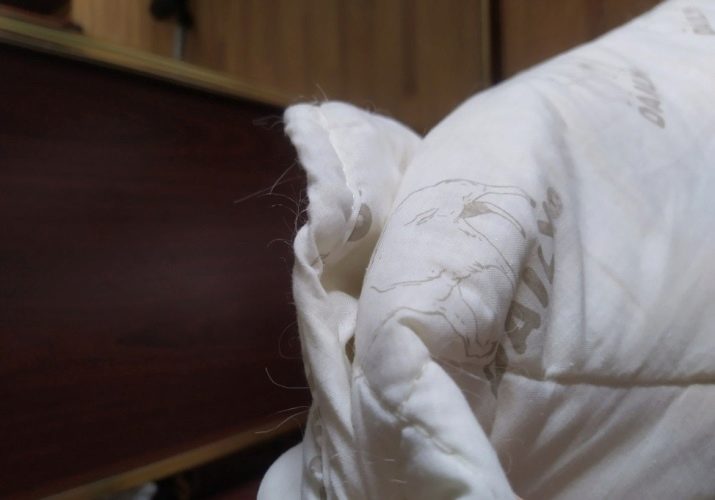What are the filling materials for blankets and which one is better to choose?
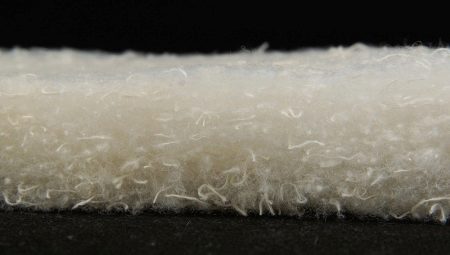
The rest of your night's sleep can be highly influenced by the filler used for the duvet. In addition to the already familiar to everyone down, as well as cotton and wool, in the market of sleeping accessories today you can find all kinds of artificial, synthetic materials, which in their unique characteristics are not inferior, and sometimes even surpass natural ones. How to figure out which fillers are best for a particular person?
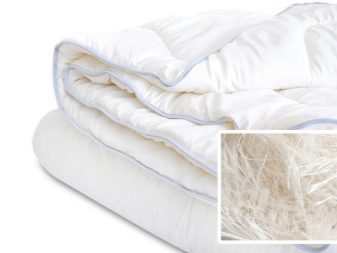
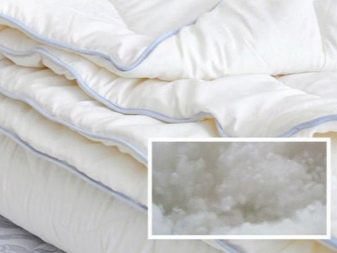
Natural species
Natural materials for modern blankets are called the most environmentally friendly. These include: wool, fluff, plant fibers.
Bird fluff
Quite often, blankets are filled with the down of waterfowl: most often geese and wild ducks. At the same time, the products are quite warm, as light as possible and extremely soft. However, such types of products need to be properly looked after so that the fluff does not in any way become damp, and so that dust mites cannot start in it.
Pros:
-
low thermal conductivity;
-
excellent circulation of air masses;
-
substantial service life - up to a quarter of a century.
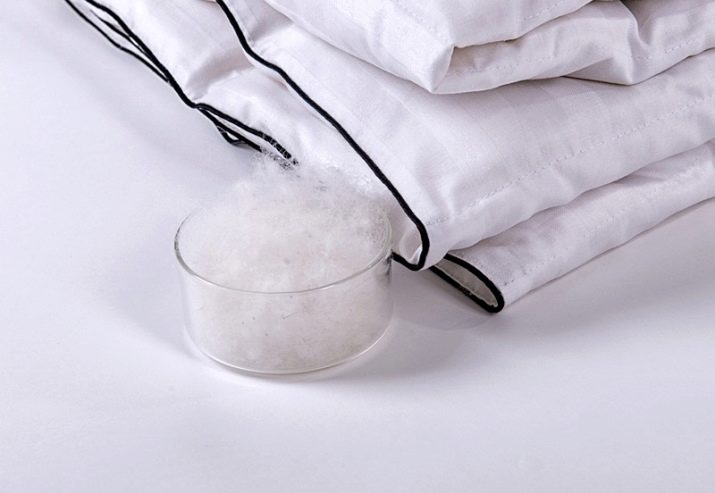
Minuses:
-
products can retain moisture;
-
feathers are considered a serious allergen;
-
very high cost.

Sheep's wool
This material can be considered a classic blanket filler. The "dry heat" of woolen raw materials is distinguished by excellent air permeability, excellent moisture permeability. These blankets have proven healing properties and are very affordable and have become a favorite with many modern consumers.
-
This kind of filler also has significant drawbacks: not the longest service life.The material will not last as long as we would like - only 2-3 years, since natural sheepskin has the unpleasant property of caking too quickly.
-
There is a high likelihood of allergies.
-
And also before buying it is worth knowing that it is better not to wash such products in a washing machine, and they do not tolerate hand washing. This can significantly complicate the process of high-quality care of the purchased blanket.
-
Not the most pleasant smell, as noted by many consumers.
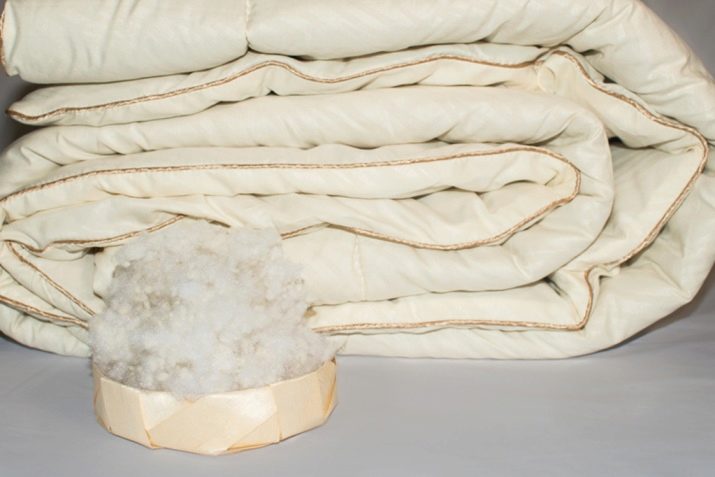
Camel's wool
The wool of such a noble animal as the camel is a natural type of filler for modern blankets - this is an essential balance between a pleasant price and excellent quality.
This kind of wool will be slightly heavier than the popular cashmere, but nature has endowed it with excellent thermal control characteristics.

There are other types of natural fillers as well.
Bamboo
This plant material is created from bamboo, which is subject to serious processing to make the product softer and very pleasant to use. The material is strong, but not very durable. The product can be easily machine washed, and even after many washes it will not be damaged and will completely retain its original shape. And also this product will not cause allergies among consumers.
Pros:
-
suitable for use both in the summer and during the off-season;
-
repels unpleasant odors.
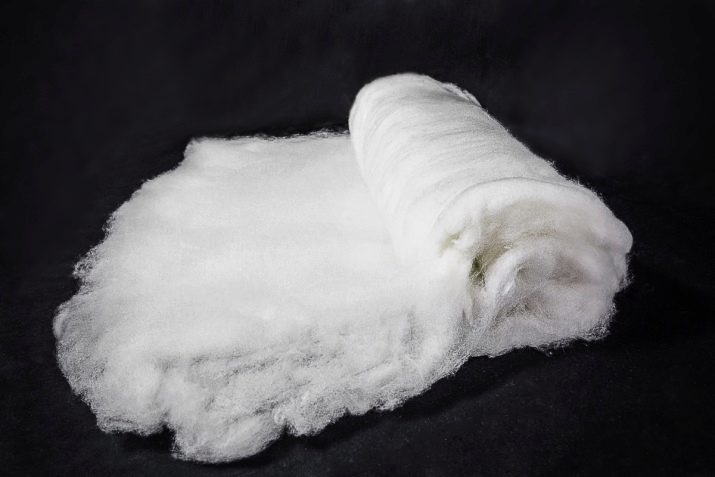
Minuses:
-
it will not retain heat in the best way;
-
will last only 2-3 years;
-
perfectly absorbs moisture.
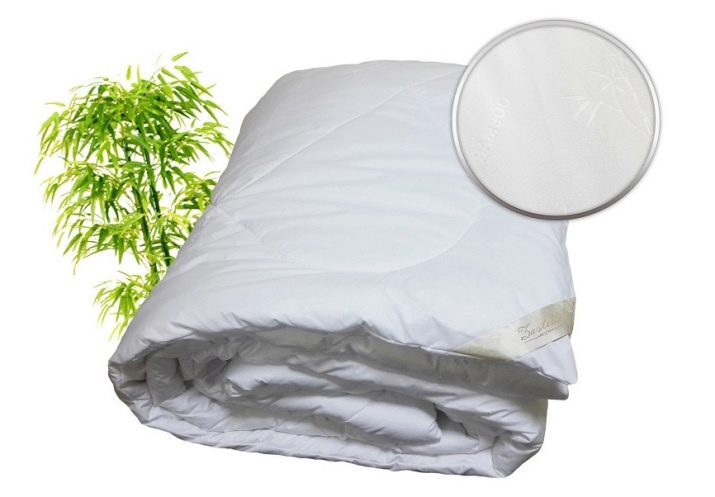
Silk fiber
A blanket with such a filler will perfectly pass air through itself and create the most comfortable microclimate for a person. The material is made from cocoons of the well-known silkworm, and this is a 100% environmentally friendly and safe filler.
Advantages:
-
lack of allergenicity;
-
impressive lightness;
-
serve for over 10 years.
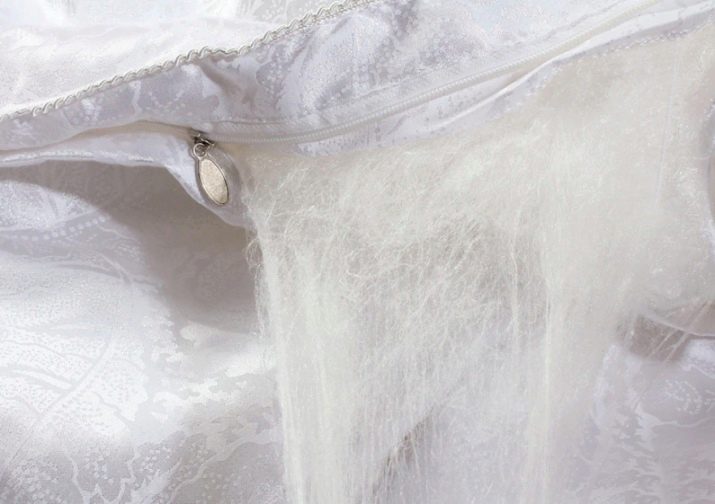
Minuses:
-
rather high price in comparison with other fillers;
-
it will be bad to keep warm.
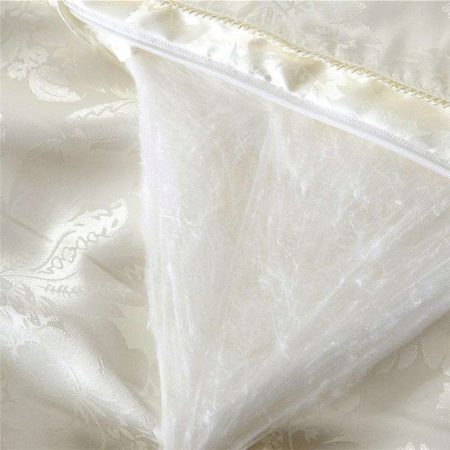
Cotton wool
Wadded items are stuffed with cotton material. It will not cause allergies and is considered the most affordable. These are some of the warmest types of blankets.
Minuses:
-
severely accumulates moisture;
-
quite heavy;
-
the service life is only 2-3 years.


Cotton
Cotton fiber is considered by experts to be the best natural filler. The fibers are removed from the cotton, they are cleaned well after that, they are combed out with high quality and carefully processed with a special composition so that the resulting material does not cake. This product has a number of positive qualities:
-
will absorb sweat well;
-
helps the skin to "breathe" calmly during sleep;
-
perfectly retains the necessary heat;
-
products are extremely pleasant if you touch them;
-
affordable price.

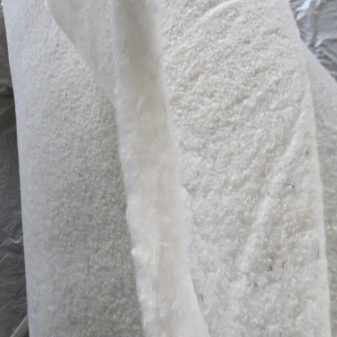
The main disadvantage of cotton as a filler is that this eco-friendly material can roll into dense lumps after a certain period of time. In addition, cotton can absorb various unpleasant aromas, and it also often damp, as it does not evaporate the accumulated moisture poorly.
Eucalyptus
The material is made from natural eucalyptus stems. Such blankets can perfectly retain heat, which positively distinguishes them from other products. But eucalyptus blankets are considered the most expensive of all known natural materials.
Pros:
-
will not cause allergies;
-
are not afraid of germs;
-
keep warm well;
-
the term of use is 10 years and even more;
-
easy care;
-
impressive durability.


Minuses:
-
high price.
Lyocell
This is a very high quality fiber, which is made from cellulose, which is extracted from natural eucalyptus wood. This raw material is called very useful and completely safe. The material is considered one of the most significant discoveries in modern light industry.
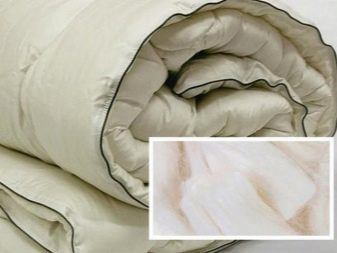
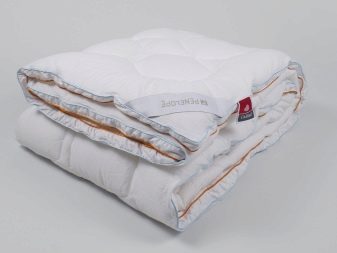
Tencel (one of the varieties of lyocell)
Tencel is one of the best synthesized fillers.It is also called eucalyptus viscose, which is hypoallergenic and durable. In terms of its comfort, the filler can be considered one of the warmest in its segment, however, in terms of its characteristics, it will not reach the advantages of fluff or cashmere. Allergy sufferers are likely to opt for a product with a material such as tencel - it has a high cost.
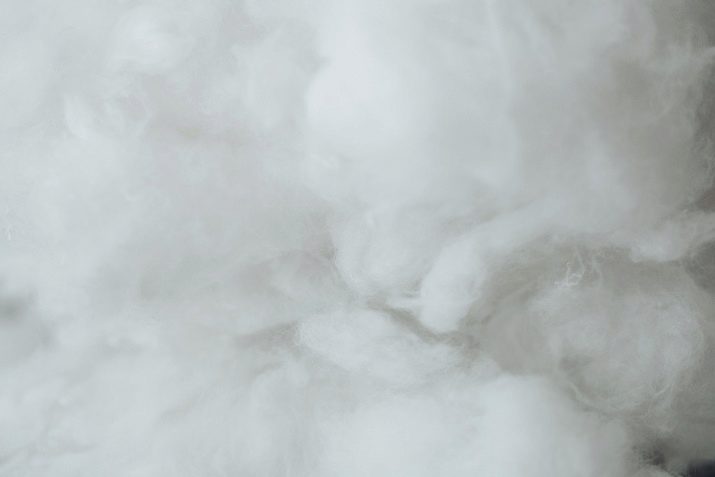
Together with the recognized leaders among vegetable fillers - bamboo and tensel - the primary raw material for viscose-like fiber, almost any raw material of plant origin (birch material, maize, aka corn), softwood, soybeans and even, oddly enough, nettle can be used.
Artificial fillers
Sintepon
First of all, you should get acquainted with one of the most inexpensive synthetic fillers for blankets - padding polyester. Due to their frequent occurrence in stores, due to the low price tags, it is the synthetic winterizer blankets that are most often purchased. Inside the padding polyester there are polyester fibers - this is a very popular material that is lightweight and has an excellent degree of heat retention. Distinctive properties - increased elasticity, significant flexibility, the ability to easily wrinkle and return to its original position.

Pros:
-
easy care;
-
long term of use;
-
low price.
Minuses:
-
withstands temperatures up to -10 degrees;
-
weak circulation of air masses.
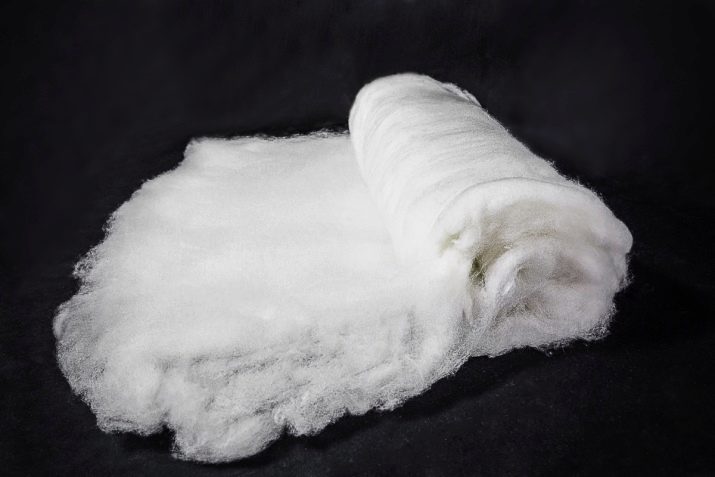
Holofiber
Among the various synthetic options, some of the best blanket fillers are made from holofiber, a material that is highly resilient. In the production process, fibers that are well twisted together in the form of springs are created, due to which the coverlet can easily take its original shape, no matter how you fold it and wrinkle it.
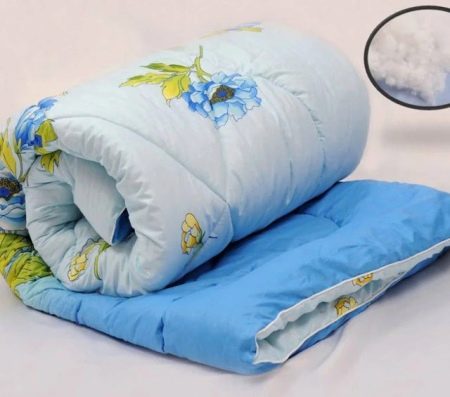
The soft structure of the fiber will perfectly keep warm, as it is not blown by the wind. Has a high resistance to fire. The filler will not absorb unpleasant odors, the material is completely non-toxic and safe.

Polyester fiber
Most of the synthetic materials are produced on the basis of polyester. Among them are blankets with polyester filling, as well as fillers such as microfiber, ecofiber and others. According to their characteristics, they differ insignificantly from each other. Of the advantages, it is possible to note the absence of allergenicity, heat resistance, low weight, and long service life. Products made from this material are quite durable.
They are easy to wash, dry quickly, do not form stitches and spools, and at the same time, their cost is quite attractive. Cons: the material is electrified, cannot "breathe" and almost does not absorb moisture.
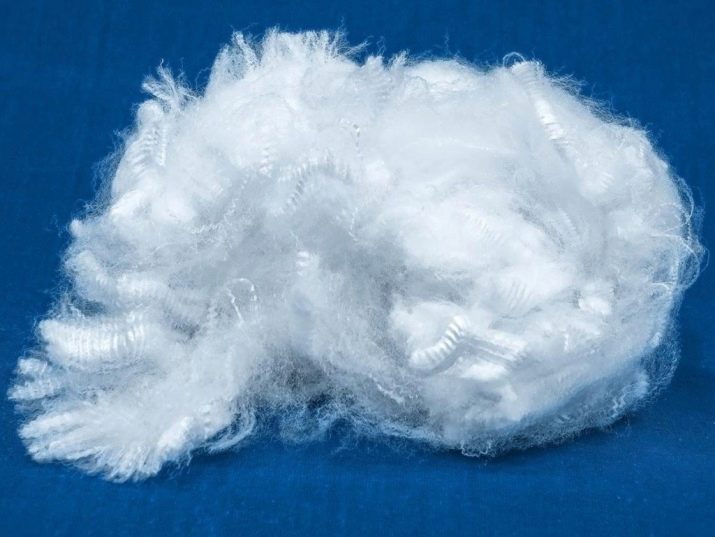
Thinsulate (artificial swan down)
It is a modern and inexpensive synthetic material that is often used as filling in blankets. Hollow siliconized fiber is characterized by low thermal conductivity, which will allow you to keep warm even in cool indoor air. This synthetic fiber is formed into balls during manufacture, which allows you to give the blanket proper density and retain its shape for a long time.
At the same time, in terms of softness, thinsulate is absolutely not inferior to natural down. A product with such a filler is suitable for people who suffer from individual intolerance to natural fillers.

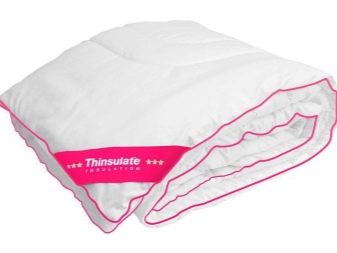
Holfitex
It is also a polyester fiber coated with a silicone nature, which gives this filler amazing softness and enviable elasticity. The difference from the same thinsulate will be in the features of technological processes, which is why materials of this kind usually differ in different lengths, thicknesses and cross-sections of fibers. In the final processing, synthetic fibers can be released both in the form of small balls (fiber) and in the form of a fluffy mass.

Microgel
Microgel is another subtype of polyester fibers, but of an improved generation. This material is the same as the microscopic fiber in demand today, with a small thickness of the fibers obtained. Thin filaments are combined into thickened ones, after which structures in the form of balls are created from them.
Microgel is called one of the best synthetic fluff substitutes, as this fiber is very lightweight and hypoallergenic when compared to natural materials.
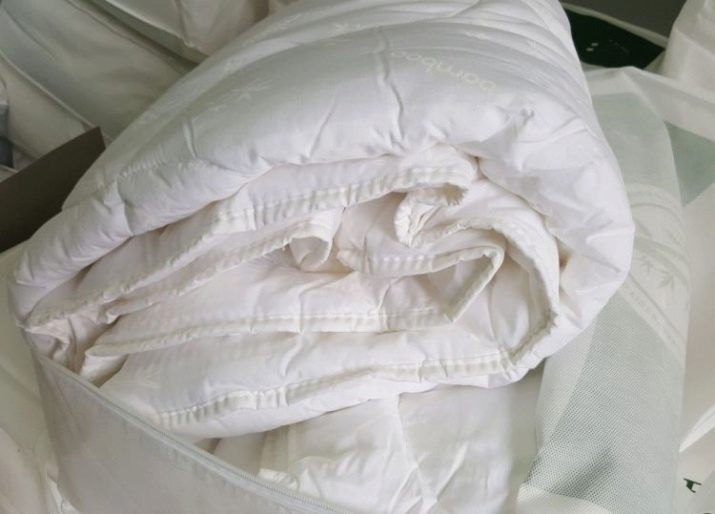
Blankets filled with microgel quickly recover in volume, they are distinguished by high air permeability, moisture resistance and heat capacity, which create the most comfortable conditions for good rest.

Nuances of choice
Any type of filler for blankets has its own characteristics, strengths and weaknesses - your final decision may depend on which product is best to buy for your bedroom. Synthetic options, undoubtedly, will cost much less than natural counterparts, however, it is worth remembering that natural "fillings" are highly allergenic.
What kind of filler for your blanket is better to take for quality sleep will tell you the rating of their best characteristics in order to choose the right one for sleep:
-
The warmest filling material for blankets that are used for severe winter conditions is cashmere;
-
insulation for adults who have problems with the spine or joints - this is undoubtedly sheep wool;
-
the cheapest of all the above fillers is a synthetic winterizer;
-
flax fibers will differ in the longest service life;
-
excellent antibacterial and antimicrobial properties - in bamboo;
-
the warmest products for temperate latitudes should contain fluff or wool.

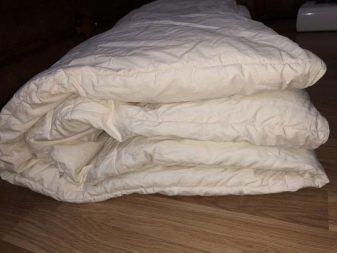
A great alternative has long been the "filling" of vegetable fibers, but they are best suited for the usual cool or just warm seasons. Synthetic products of the latest generation are distinguished by excellent consumer qualities. Before you finally decide on which blankets you should buy, with what kind of filler, what density, it will be right to first carefully familiarize yourself with all the characteristics of specific materials, with certain requirements for their care, reviews of experienced consumers.
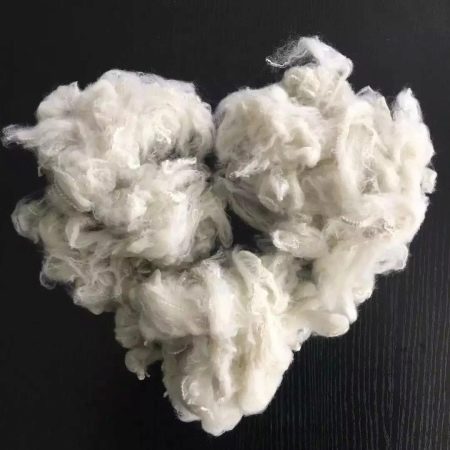
Not knowing which blanket to take for your baby, you should ask about the principles of hypoallergenicity, safety, warmth.
For children, do not buy all-season duvets made of down and woolen "fillings" - they too often cause allergies or skin irritation.
Sintepon and holofiber are not very expensive, but at the same time they are completely safe for any babies and will perfectly store heat. Modern quality bamboo blankets are inexpensive. They will be distinguished by an environmentally friendly component and simple maintenance, they will last 1-2 years. As your toddler gets a little older, you will still need to change all the bedroom accessories for him. The most expensive blankets are made of eucalyptus and silk fibers, which are comfortable to sleep under. A baby with such a blanket will be completely protected from overheating and allergies. Lightweight blankets will help your baby's skin breathe, which means his sleep will be comfortable and strong.

Review overview
Most consumers claim that quilts with synthetic fillers behave much better with frequent use than their natural counterparts. This is due primarily to the fact that artificial materials are much cheaper than natural materials, which means that products made from them are more accessible to the average man in the street.
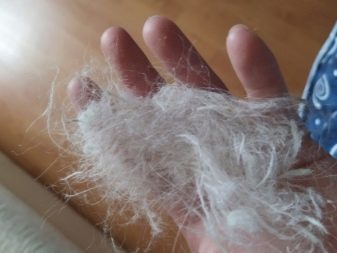
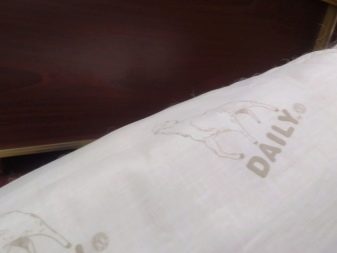
Synthetic blankets do not cause allergic reactions, they last longer, however, many people under them really sweat seriously; such a reaction is almost not observed when using blankets made from natural fillers. Alas, caring for such products is a very troublesome business, dry cleaning is expensive, and a cheap blanket can easily be washed in a washing machine.
